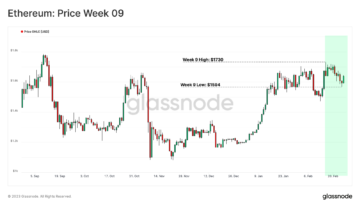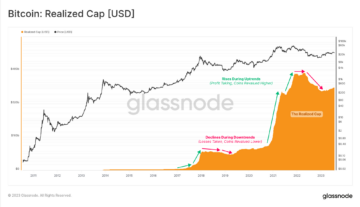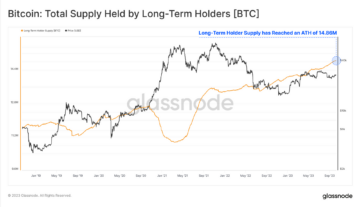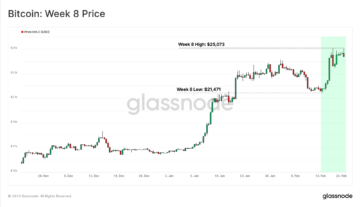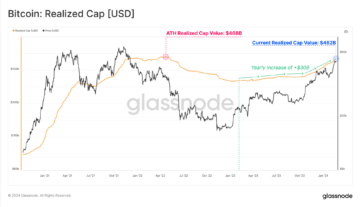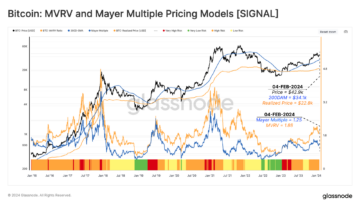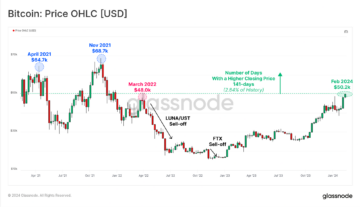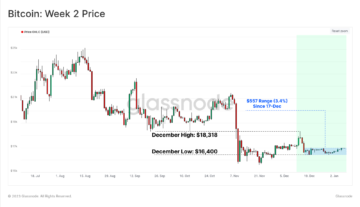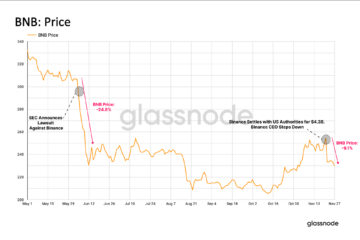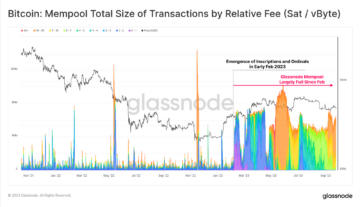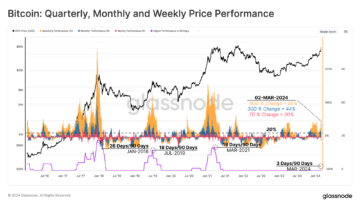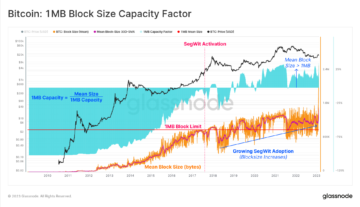Learn about how to apply our new suite of metrics to better identify local bottoms in a bull market and start applying these insights in your trading strategies.
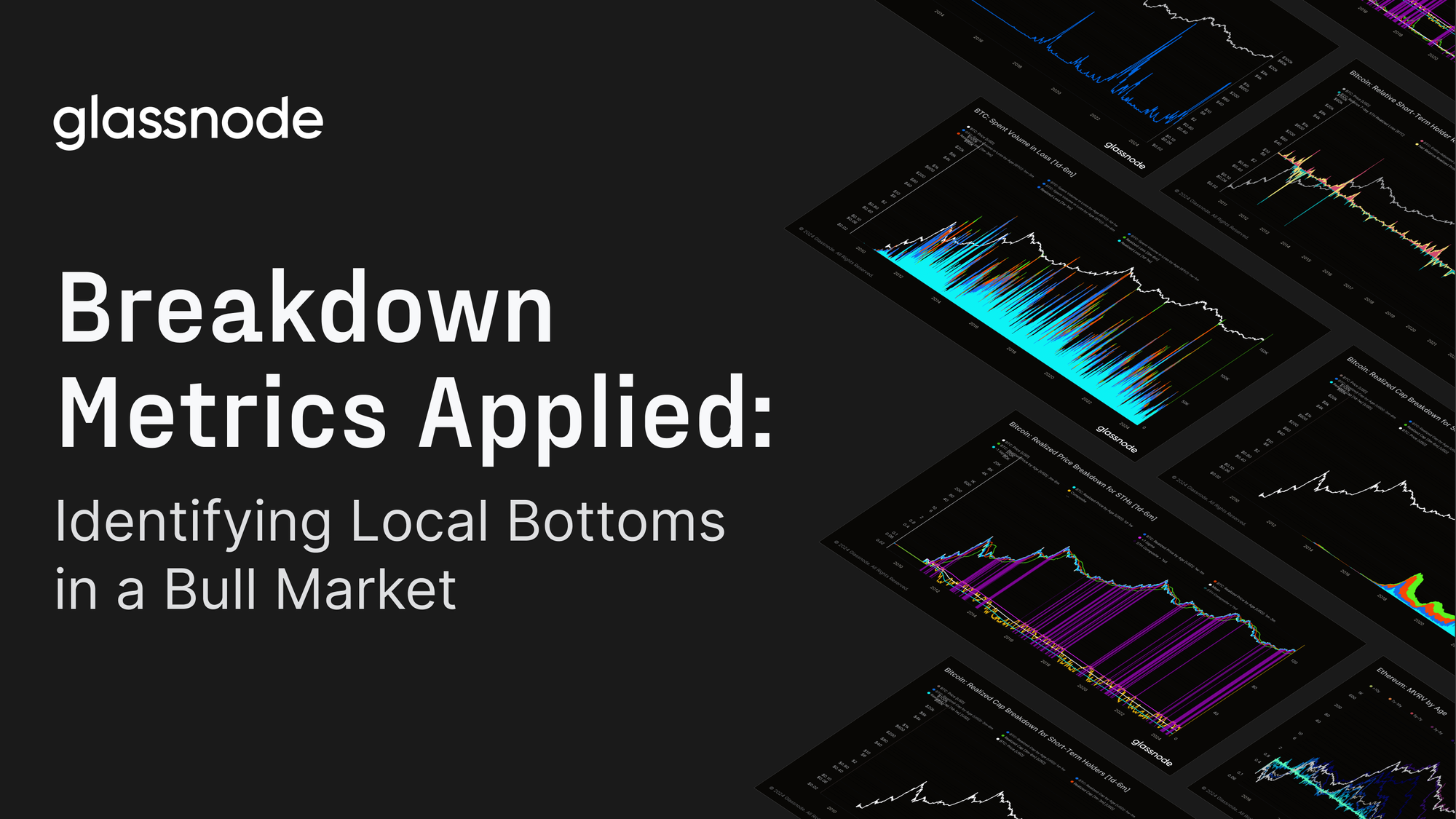
In a significant development for the on-chain analysis field, Glassnode has recently launched a suite of 28 new metrics designed to offer an even more granular view of the digital asset market. You can read more about them in our original announcement here.
These granular metrics can be a game-changer for traders. They provide highly detailed and intuitive insights that can be translated into potential buy and sell signals. One powerful use case for these new metrics is identifying seller exhaustion across different age cohorts within short-term holders.
Applying our new Breakdown metrics, traders can now more precisely pinpoint moments of severe unrealized loss and capitulation, which often signal local market bottoms and potential entry points during a bull market. This framework, explored in detail in this report and summarised below, provides actionable insights for traders aiming to optimize their market entries or DCA strategies.
Why Focus on Short-Term Holders?
In the context of on-chain analysis, long-term holders (LTH) and short-term holders (STH) represent distinct groups with different behaviours and market impacts. Short-term holders are often newer entrants or speculative traders who are more sensitive to price changes. During bull markets, these investors are responsible for the majority of realized losses, as they are more prone to selling in response to market volatility. This behaviour makes the analysis of short-term holders particularly valuable for identifying local market bottoms.
Benefits of Applying Breakdowns to STHs
By breaking down the short-term holder cohort into granular age bands, we help traders pinpoint periods of seller exhaustion more effectively. For example, we can observe how unrealized loss pressure and capitulation events start with the shortest timeframes (1 day) and propagate across longer timeframes (1 week to 1 month, and longer) within the short-term holder group. This inside-out progression provides a clearer signal of potential local bottoms and subsequent market reversals.

In other words, with the granular insights made possible by the Breakdown metrics, traders can detect confluences of capitulation events across different short-term timeframes, which significantly enhances the likelihood of identifying a local bottom.
Framework for Identifying Local Bottoms in a Bull Market
To identify seller exhaustion, we use a combination of key metrics that provide insights into both unrealized and realized losses within the short-term holder cohort. The framework is comprised of the following metrics:
- STH MVRV by Age: The Market Value to Realized Value (MVRV) measures the unrealized profit or loss of an asset. When the MVRV trades significantly below the mean, it indicates heightened unrealized losses among holders. This helps detect early signs of sell-side pressure, as significant unrealized losses often precede actual selling activity by short-term holders.

- STH SOPR by Age: The Spent Output Profit Ratio (SOPR) provides insight into whether the unrealized financial pressure observed in the MVRV is being acted upon. A negative SOPR Z-Score indicates that short-term holders are capitulating, selling their assets at a loss, and contributing to sell-side pressure.

- STH Realized Loss by Age: This metric assesses the magnitude of losses that have been realized by short-term holders. High realized loss values confirm that the sell-side pressure identified by the MVRV and SOPR metrics has materialized, validating periods of seller exhaustion by quantifying the magnitude of losses realized.

By using Z-Scores, we standardize these metrics, allowing for easier comparison and identification of significant deviations from the mean. Z-Scores highlight periods of extreme behaviour, making it simpler to detect when unrealized and realized losses are unusually high. This standardization helps confirm genuine periods of seller exhaustion by filtering out noise and focusing on statistically significant events, providing traders with clearer signals.
Practical Applications for Traders
Using Glassnode’s new Breakdown metrics to identify points of seller exhaustion during a bull market can offer numerous advantages for traders. Here are the key benefits:
- Early Detection of Local Bottoms: By pinpointing moments of severe unrealized loss and capitulation among short-term holders, traders can identify local market bottoms before they become evident, providing opportunities for early entry points.
- Optimized Dollar-Cost Averaging (DCA) Strategies: Understanding periods of seller exhaustion allows traders to implement DCA strategies more effectively, buying assets at lower prices during local bottoms and reducing average purchase costs.
- Enhanced Market Timing: By observing how sell-side pressure propagates from the shortest timeframes to longer timeframes within the short-term holder cohort, traders can better time their market entries and exits, maximizing profits and minimizing losses.
- Strategic Flexibility: The granular breakdown of short-term holders into age bands allows traders to apply this framework across various trading strategies, from day trading to swing trading, ensuring that they can adapt their approach based on specific market conditions.
By leveraging the insights provided by our new Breakdown metrics, traders can gain a competitive edge in the market, making more strategic and profitable decisions.
Start Leveraging Glassnode’s Breakdown Metrics for Your Trades Today
Currently, these powerful breakdown metrics are exclusively available with the Glassnode Enterprise plan. A complete overview of new metrics, dashboards, and documentation is available here.
If you are an institutional trader or investor and would like to leverage these metrics to gain a deeper edge in trading the Bitcoin and Ethereum markets, please contact our institutional sales team today.
- SEO Powered Content & PR Distribution. Get Amplified Today.
- PlatoData.Network Vertical Generative Ai. Empower Yourself. Access Here.
- PlatoAiStream. Web3 Intelligence. Knowledge Amplified. Access Here.
- PlatoESG. Carbon, CleanTech, Energy, Environment, Solar, Waste Management. Access Here.
- PlatoHealth. Biotech and Clinical Trials Intelligence. Access Here.
- Source: https://insights.glassnode.com/breakdown-metrics-applied-identifying-local-bottoms-in-a-bull-market/
- :has
- :is
- 1
- 1800
- 20
- 200
- 28
- a
- About
- across
- actionable
- activity
- actual
- adapt
- advantages
- age
- Aiming
- Allowing
- allows
- among
- an
- analysis
- and
- Announcement
- applications
- applied
- Apply
- Applying
- approach
- ARE
- AS
- assesses
- asset
- Assets
- At
- available
- average
- averaging
- based
- BE
- become
- been
- before
- behaviour
- behaviours
- being
- below
- benefits
- Better
- Bitcoin
- bitcoin and ethereum
- both
- Bottom
- Breakdown
- Breaking
- bull
- Bull Market
- buy
- Buying
- by
- CAN
- capitulation
- case
- Changes
- clearer
- Cohort
- combination
- comparison
- competitive
- complete
- Comprised
- conditions
- Confirm
- content
- context
- contributing
- Costs
- dashboards
- day
- Day Trading
- Dca
- decisions
- deeper
- designed
- detail
- detailed
- detect
- Detection
- Development
- different
- digital
- Digital Asset
- distinct
- documentation
- Dollar-Cost Averaging
- down
- during
- Early
- easier
- Edge
- effectively
- embedded
- Enhances
- ensuring
- Enterprise
- entrants
- entry
- ethereum
- Even
- events
- evident
- example
- exclusively
- exits
- Explored
- extreme
- field
- filtering
- financial
- Focus
- focusing
- following
- For
- Framework
- from
- Gain
- game-changer
- genuine
- Glassnode
- granular
- Group
- Group’s
- Have
- heightened
- help
- helps
- here
- High
- Highlight
- highly
- holder
- holders
- How
- How To
- HTTPS
- Identification
- identified
- identify
- identifying
- Impacts
- implement
- in
- indicates
- insight
- insights
- Institutional
- into
- introducing
- intuitive
- investor
- Investors
- IT
- Key
- launched
- Leverage
- leveraging
- like
- likelihood
- live
- local
- long-term
- long-term holders
- longer
- loss
- losses
- lower
- made
- magnitude
- Majority
- MAKES
- Making
- Market
- market conditions
- market value
- market volatility
- Markets
- maximizing
- mean
- measures
- metric
- Metrics
- minimizing
- Moments
- Month
- more
- MVRV
- negative
- New
- newer
- Noise
- now
- numerous
- observe
- observed
- observing
- of
- offer
- often
- on
- On-Chain
- On-chain analysis
- ONE
- opportunities
- Optimize
- or
- original
- Other
- our
- out
- output
- overview
- particularly
- periods
- plan
- plato
- Plato Data Intelligence
- PlatoData
- please
- points
- possible
- potential
- powerful
- precisely
- pressure
- price
- Prices
- Profit
- profitable
- profits
- progression
- provide
- provided
- provides
- providing
- purchase
- ratio
- Read
- realized
- recently
- reducing
- represent
- response
- responsible
- reversals
- s
- sales
- sell
- Selling
- sensitive
- severe
- short-term
- Short-term holder
- shortest
- Signal
- signals
- significant
- significantly
- Signs
- simpler
- SOPR
- specific
- speculative
- spent
- standardization
- start
- statistically
- Strategic
- strategies
- subsequent
- suite
- Swing
- that
- The
- their
- Them
- These
- they
- this
- time
- to
- today
- trader
- Traders
- trades
- Trading
- Trading Strategies
- translated
- understanding
- unrealized losses
- upon
- use
- use case
- using
- validating
- Valuable
- value
- Values
- various
- View
- Volatility
- we
- week
- when
- whether
- which
- WHO
- with
- within
- words
- would
- you
- Your
- youtube
- zephyrnet


